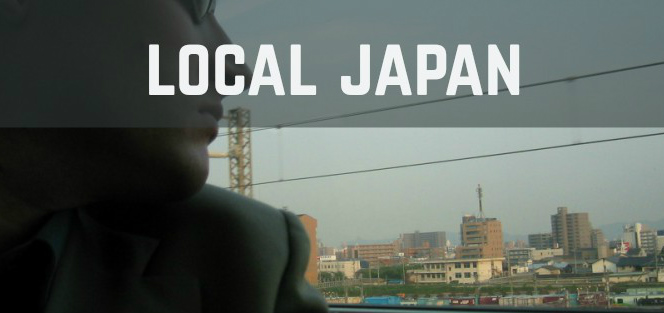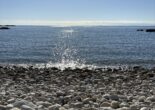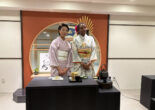
When I first arrived in Japan, it was a whirlwind of emotions and activity, from landing at Osaka, taking the shinkansen to Okayama for the first time, and learning the Lawson clerk was just asking if I wanted my pasta heated up. I can still remember staring out the window of the Kodama train, dressed up in a nice suit and Oakleys, watching the Japanese towns blur together as I went further west.
It’s been a few years since I called Higashi-Hiroshima my home in Japan, but the memories are still fresh. Unlike in east Japan, where I arrived in April and enjoyed the cherry blossom season with the start of the work year along with most of the country, I arrived for my first Japanese experience in the heart of rainy season… and a particularly hot one at that. Learning “atsui, ne?” was never a problem.
Higashi-Hiroshima has the appearance of an inaka town, but in actuality it’s perfectly positioned for travelers looking to escape the crowds of a city like Hiroshima while still being close to mountains and rice fields. I spent my first few months sweating like crazy in the infamous Japanese heat and humidity while running between the train station and Hiroshima University, a nice little stretch of road that takes you through a park good for cherry blossom viewing and watching the autumnal colors changing.
A summer in Hiroshima is full of activities both entertaining, and somber. Iwakuni and its Kintai Bridge are an easy train ride away, as is the picturesque Miyajima and floating shrine; my first fireworks experience in Japan involved getting to the island in the early afternoon and petting deer as the crowds built up until they numbered in the hundreds of thousands. Anyone who says it’s impossible to compare anything with the morning commute on the Yamanote Line clearly hasn’t tried taking a train back to Hiroshima at midnight after the summer festival.
Of course, the city itself is renowned for being one of only two exposed to an atomic bomb explosion, with ceremonies on August 6th commemorating the dead and continuing the call to peace. I’m embarrassed to admit that I, fresh out of university at the time, asked if there were still affects from the radiation impacting the modern city; I knew enough about the half-life of plutonium, but apparently far too little about how nuclear weapons work. In case you’re wondering, there is no risk to living in Hiroshima or Nagasaki today, aside from eating too much okonomiyaki.
I don’t even have to travel that far to be entertained. In October, Higashi-Hiroshima hosts the Sake Matsuri, bringing in breweries from all over the country to let patrons sip unlimited nihonshu until dusk, but only if they do so out of a small sake cup; I have some from three years lining my shelves, and hope to add a fourth soon.
Hiroshima is where I first established myself in Japan as an expat. 7-11 employees knew me as the disposable chopsticks started filling my kitchen shelves, the waiter at the local izakaya always knew my go-to order of salmon sashimi, edamame, karaage, and green tea, and I got accustomed to the mix of recognition from students and outright gawking from children and rubes.
Waking up, I could always spot the You Me Town department store logo in the distance from the view off my 10th floor balcony. Mountains surround Saijo, leaving it in a veritable valley. There’s no serious lifting or climbing to get to work, just a 10-15 minute walk away across from an arcade and a bakery serving up some of the best pear pie I’ve had in Japan.
Socializing isn’t a problem with so many foreign English teachers in nearby Hiroshima and university students scattered across the town looking for a fun night out. Residents of Tokyo know all too well the choice they face when the clock starts ticking down at 11:30… do I catch the last train, or does this party have the momentum to turn into an all-nighter? I have until 1:00 AM, but I still have to be careful; once after a long day sightseeing and shopping I was half asleep before realizing I had boarded the Kure Line and not the Sanyo Line. I was two stops away before waking up and resigned myself to sleeping outside. As a result, I stashed my belongings in a coin locker and wandered around in the middle of an unknown town in the middle of the night before collapsing onto a park bench until 5:00 AM. Luckily, it’s Japan, and I don’t have to fear for my safety.
I could have done a few things differently, had I known better. When I first arrived in Saijo I paid 100 yen for every eight minutes of drying clothes even when the weather was good enough to hang them outside; some American habits are hard to break. I tried bento boxes for a while, but realized I’m always going to be more of a sandwich guy… and the first bakery I saw that had butter rolls experienced a 2000% rise in sales until I left the following year.
Japan isn’t all sunshine and lollipops. Being my first time in the country and my first attempt at living abroad, I was caught off guard by many cultural differences and alienated a lot of my coworkers in Higashi-Hiroshima (in fairness, my manager at AEON was a truly horrible person, e.g. asking me to push products onto a woman about to take maternity leave). After jotting down nearly all of my observations working for the company, my blog posts on the truth about working at AEON remain some of the highest search results for those considering teaching there.
There are creature comforts at the end of the day. Catching the local time to Hiroshima Station then hopping on a shinkansen all the way to Hakata for a crazy night out followed by a day of exploration. Getting a taste of Hokkaido crab at a local restaurant next to the biggest pachinko parlor in town. Running at night and having a big black beetle smack right into the middle of your forehead… thankfully, I never saw any centipedes or snakes out here, but spiders are en masse.
Little discoveries are what keep Japan interesting for me. I haven’t been here that long, but it’s not one factor that has me staying. It’s the combination of safety, convenience, health, and attitude, both from myself and those around me. I like who I am better in Japan than in the US. Even if this is due to a superficial ego boost of being taller or a white face in a nearly ethnically homogeneous country, it works for me, and hopefully will continue to do so if I decide to stay.
Related Articles
Warning: Undefined array key "sfsi_threadsIcon_order" in /home/veremosglobal/tokyoroomfinder.com/public_html/blog/wp-content/plugins/ultimate-social-media-icons/libs/controllers/sfsi_frontpopUp.php on line 165
Warning: Undefined array key "sfsi_blueskyIcon_order" in /home/veremosglobal/tokyoroomfinder.com/public_html/blog/wp-content/plugins/ultimate-social-media-icons/libs/controllers/sfsi_frontpopUp.php on line 170
Warning: Undefined array key "sfsi_bluesky_display" in /home/veremosglobal/tokyoroomfinder.com/public_html/blog/wp-content/plugins/ultimate-social-media-icons/libs/controllers/sfsi_frontpopUp.php on line 266



